Propane fridges are fantastic in many ways, especially when you’re boondocking and trying to conserve electrical power. Propane RV fridges actually use SOME electricity (12V, and not a lot) as well as propane. And since your RV’s furnace probably also uses propane and your stove certainly does, it’s good to know roughly how much propane each appliance uses. So, today we’re asking the question, “How much propane does an RV fridge use?”
Let’s jump right in…
- 1) How Does a Propane Fridge Work?
- 2) What Factors Determine How Much Propane My RV Fridge Uses?
- 3) Does an RV Fridge Need Electrical Power to Run on Propane?
- 4) How Long Will a 20-Pound Propane Tank Run an RV Fridge?
- 5) How Can I Reduce the Amount of Propane My RV Fridge Uses?
- 6) How Much Propane Does Your RV Fridge Use?
- 7) Geek Out With Us
How Does a Propane Fridge Work?
Before we get into how much propane an RV fridge might use, let’s take a look at how a propane fridge works, so we’ll have a general idea of the process that keeps your RV fridge cold. We’ll try to keep this brief, but if you’d like more information, please visit our post entitled, “What Is an RV Refrigerator? How Does It Work?”
A typical RV fridge is called an absorption fridge. It uses hydrogen, ammonia, and water to create an evaporation process that extracts heat and cools down the interior of the fridge. That’s right – an RV absorption fridge uses heat (in this case provided by propane) to drive the cooling cycle. So, essentially it creates cold by absorbing heat.
Here’s how it works:
Boiler
Step one starts at the boiler where your propane heats the mixture of water + ammonia.
Separator to Absorber
The heated water + ammonia solution moves to the separator. Here, the ammonia evaporates, moving through the pipes of the fridge, and the water moves down to the absorber.
Condenser
The ammonia vapors are intercepted by a condenser that extracts the heat and the ammonia returns to liquid.
Freezer’s Evaporator to Fridge’s Evaporator to Fridge Exterior
The liquid ammonia moves to the freezer’s evaporator. Here, hydrogen is added. The mixture of ammonia + hydrogen moves to the refrigerator’s evaporator. During these steps, heat in the fridge and freezer gets absorbed (cooling them) and moved to the exterior of the fridge, leaving behind a cold fridge interior and a very cold freezer interior.
Absorber Back to Boiler
Once the ammonia has passed through both evaporators (freezer & fridge), it enters the absorber where it separates from the hydrogen and mixes again with the water, after which it returns to the boiler (step one).
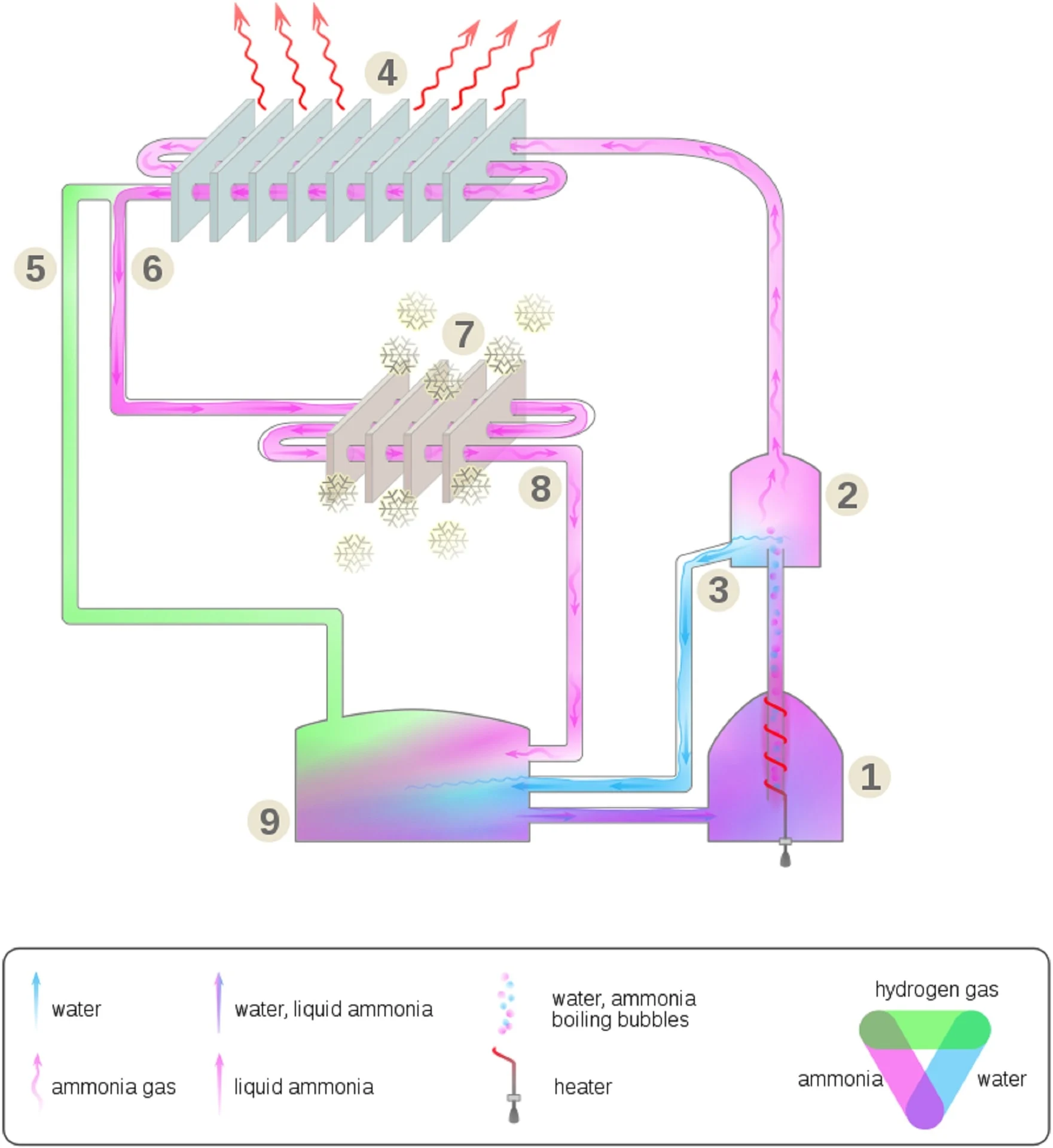
Diagram showing the absorption refrigeration cycle (photo courtesy of Wikipedia)
What Factors Determine How Much Propane My RV Fridge Uses?
A number of factors contribute to how much propane your RV fridge uses. These include the ambient (outside) temperature, how the refrigerator is packed, whether you put cold or warm food into the fridge, even (to some degree) how frequently the fridge is opened.
But the two most significant determinants of how much propane the fridge will use are the size and the age of the RV propane fridge. (Newer units are more thermally efficient, so don’t need to cycle as often and burn less propane.)
Does an RV Fridge Need Electrical Power to Run on Propane?
Yes. An RV fridge requires 12V power from your RV’s house battery bank in order to keep the circuitry that controls the fridge’s operation running.
Even when running in propane mode, the RV absorption fridge’s circuit board needs to run, and it receives its power from your RV’s battery/batteries.
How Long Will a 20-Pound Propane Tank Run an RV Fridge?
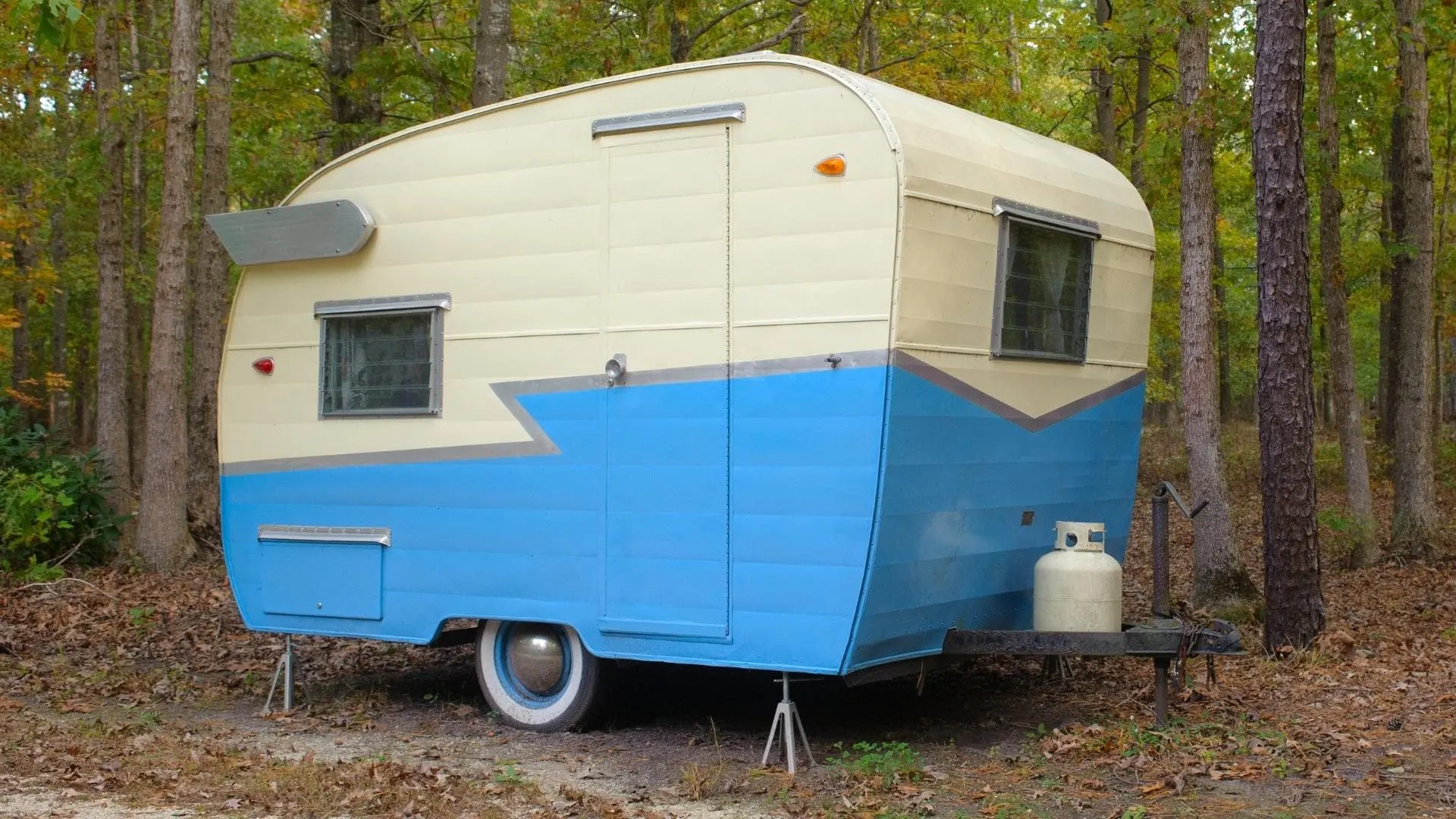
If you have an older RV fridge with a 20-lb propane tank, it’s likely to consume more propane than a newer, more efficient RV fridge. For this reason, predicting how long a 20-lb propane tank will last without knowing several other variables is difficult.
The answer to this question depends on a number of factors including the size of the RV fridge, how old the model is, the ambient temperature in which it’s operating, and more.
But, using an 8 cu ft RV fridge like Dometic’s DM 2882 rated at 1,500 BTUs per hour as an example, we can calculate a rough estimate.
A gallon of propane = 91,502 BTUs. This means that you could run your fridge for approximately 61 hours on one gallon of propane.
A full 20-pound propane tank contains 4.6 gallons of propane. So:
4.6 gallons x 61 hours/gallon = 280.6 hours (or around 11 ½ days)
This is a very specific example using a very efficient Dometic fridge rated at only 1,500 BTUs per hour. If you’ve got an older RV fridge or a smaller one, your mileage will vary one way or the other.
Please note that our example uses a 24-hour day, and assumes that your RV fridge is running in propane mode constantly for 24 hours every day and that the propane tank in this example is only powering the fridge and no other appliances.
How Can I Reduce the Amount of Propane My RV Fridge Uses?
There are a number of actions you can take to reduce the amount of propane your RV fridge uses.
Routine Maintenance
Regularly maintaining your RV fridge can be very helpful in keeping the unit running efficiently. On the simple side, you can regularly keep an eye out for dust and debris building up at the bottom of the fridge or behind it, as well as making sure that nothing is blocking the outside vent, and keeping an eye out for soot which can mean inefficient combustion.
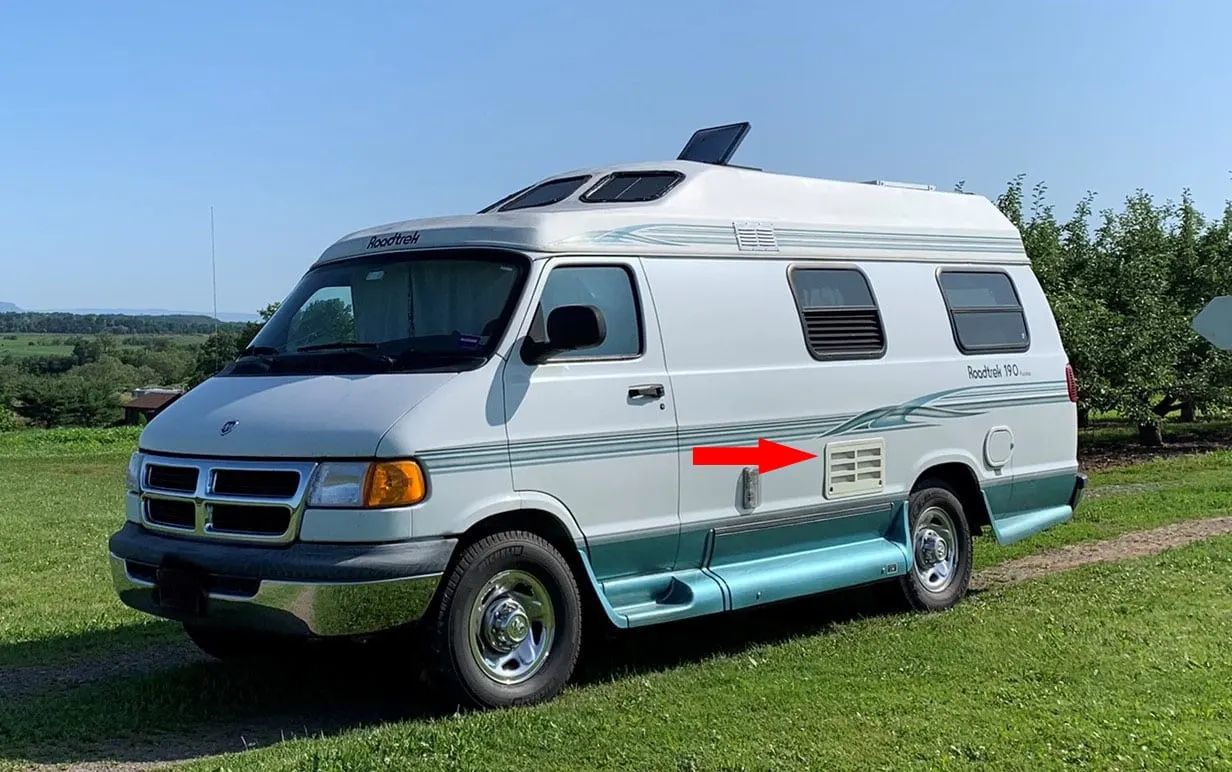
Removing the access panel to your RV fridge’s vent and checking for any build-up of debris, nests, or dirt can be a helpful part of your regular fridge maintenance.
You can also clean the cooling units and condenser fins.
On the more technical side of things, you can learn to maintain your fridge less frequently in the following ways:
- Clean the LP gas burner
- Remove dust and soot from the flue and flue baffle
- Clean the ignitor assembly
Also, be sure to check your propane regulator, especially if it’s getting old. For more information on your RV propane regulator, see our post, “Do I Need a Propane Regulator for My RV?” (Hint: Yes, you do.)
Level Your RV
Keep your RV as level as possible. This is important because absorption fridges run more efficiently on a level surface. This is because the fluids involved in cooling are gravity fed through the system, and being too far off level means they can pool in the wrong places, which reduces the amount of refrigerant available in each cooling cycle.
Additionally, absorption fridges can sustain damage if they’re really off level.
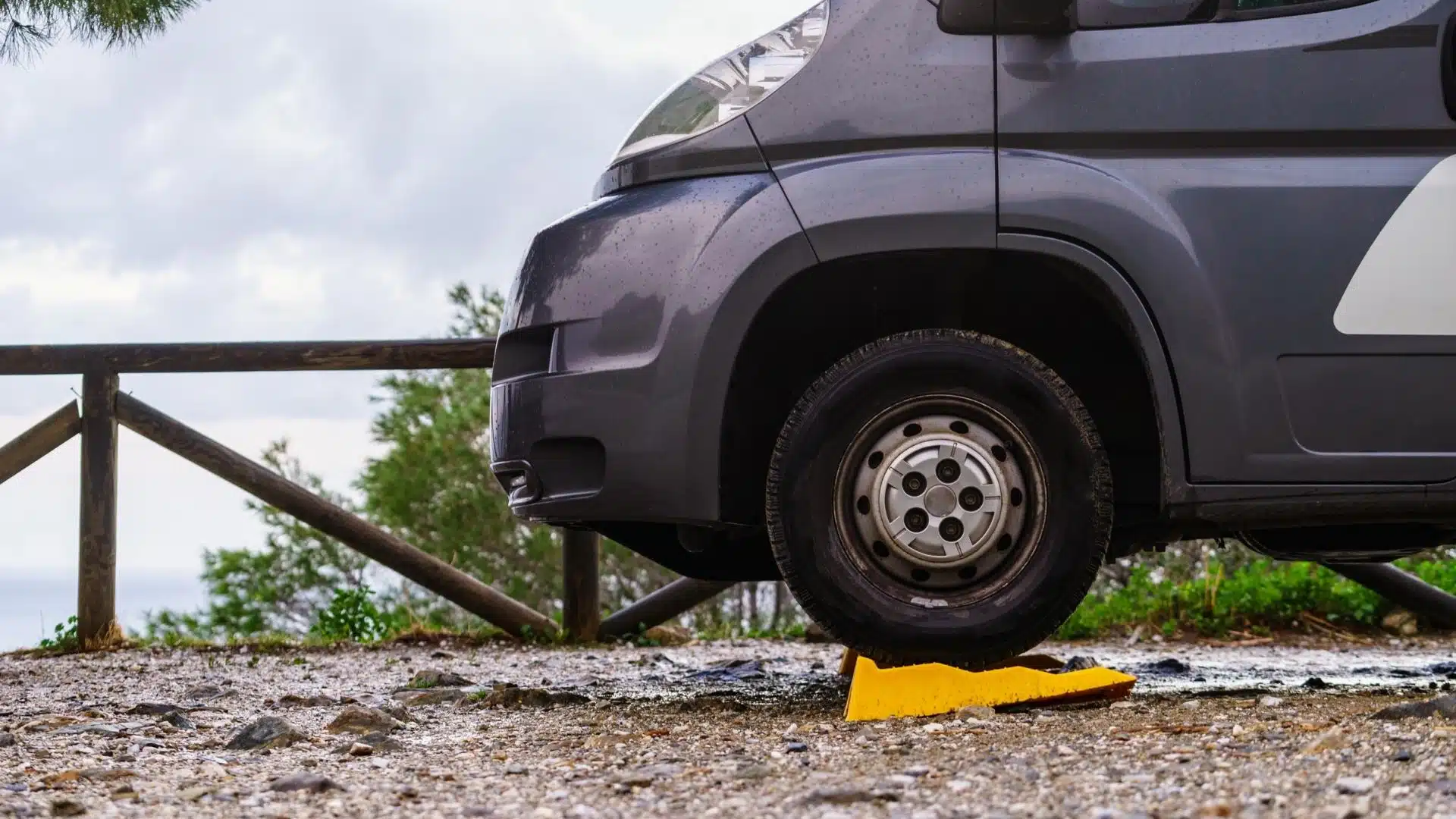
Keeping your RV level goes a long way in reducing propane consumption and preserving the good condition of your RV fridge.
Cool the Fridge Before Leaving
If your RV fridge can operate on 120V shore power, be sure to cool it down prior to leaving on a trip. It can take up to 24 hours for your RV absorption fridge and freezer to really cool down (the freezer actually cools first), and pre-cooling it BEFORE you store food inside the fridge is a policy you’ll want to adhere to every time you travel.
Pack Your Fridge Wisely
Packing your fridge wisely means not overpacking it, making sure the door closes tightly, and leaving room for air to circulate (rather than stuffing food in wherever it will fit).
Place your coldest items in the fridge first, and try to pre-cool all of the food going into the fridge whenever possible. (Pack your RV fridge with food from your home fridge, for example.)
Use Fans to Circulate the Cold Air if Necessary
There are a few different ways to address the air circulation issue.
Many RVers place small battery-operated fans inside their absorption fridges to keep the air flowing properly, which assists the fridge in keeping things cool. This addresses air circulation inside the fridge itself.
- HIGH POWER 3,000 R/M MOTOR AND DURABLE CONSTRUCTION - PATENT PENDING -While competitor versions use around 700 R/M motors, the Beech Lane fan uses a...
- LIFETIME WARRANTY AND USA BASED CUSTOMER SERVICE - If the fan ever stops working properly or is damaged, it is covered by a lifetime manufacturer...
Or you can use a set of fans like this one, placed on the fins inside the fridge. (Clicking on the Amazon link will allow you to see photos from reviewers who installed these in their fridges, giving you an idea of how these are mounted.)
- RV'ers number 1 choice
- one year warranty
Another air circulation issue involves exhausting the heat created in the process of cooling the fridge and freezer. This heat is to be vented to the outside, and small computer-type fans can be helpful in this regard, improving the flow of air over and away from heat-generating components of the cooling system. With this option, you’ll need to tap into a 12V source to hard-wire the fans.
A product like this one can be used, or you can make your own using one, two, or three computer fans.
- DESIGN FOR VENT & GRILLE MOUNTING VENTILATION- Great for refrigerator vent & grille ventilation in your motorhome, camper van, camper truck, caravan...
- FLEXIBLE AND SMART SPEED CONTROL MODE- Auto Temperature Control/ 6-levels manual controller to adjust for particular needs
How Much Propane Does Your RV Fridge Use?
If you’ve got an absorption RV refrigerator, we’d love to hear from you as to how well it has served you and how much propane your fridge consumes.
Geek Out With Us
Join our newsletter to learn about all things RV-related. Every week we offer free tips, tricks, product reviews, and more to our online community of RVers. So, whether this is your first time on the road or you’re a seasoned expert, we’d love for you to geek out with us!

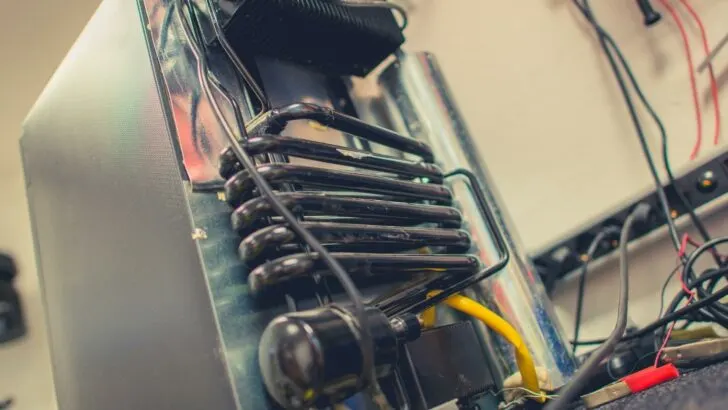



Bill Thomas
Sunday 19th of February 2023
As a full timer I can run my refrigerator for up to a month or more on propane in cooler weather, including occasional use for heating water (only for showers) as well as the propane stove.
I have a battery powered fan inside the fridge for air circulation and use rechargeable nickel metal hydride D-cell batteries to power it. Get almost exactly a month per charge. Also defrost the freezer when I notice the freezer thermometer creeping above 0° F
My Class C does have an onboard tank, which I believe is a 40 pounder so a 20 pounder would run it for over two weeks, which I have done using an extend a stay pigtail when my onboard tank gets low and want to extend my time at a campsite.
TheRVgeeks
Sunday 19th of February 2023
Thanks for sharing, Bill. Propane can sure be a robust resource!
Mark
Saturday 26th of February 2022
Air circulation
Noritz
Wednesday 23rd of February 2022
Hello! Thank you for the article! I want to draw attention to the fact that the absorption refrigerator must be securely insulated, especially in case you spend the night in the cabin, because. accidents happened. Exhaust gases must not enter the living area, and combustion air must not come from the cab.
TheRVgeeks
Wednesday 23rd of February 2022
Thanks for the additional detail, Noritz!
Rhett
Tuesday 22nd of February 2022
I can't imagine nobody has adapted one of these systems to be fed by a solar heat system. Given that solar can be turned to heat with much higher efficiency than electricity, hooking this to something like a phase change heat storage system should be a major win. I'd bet you could drive an RV ammonia cycle air conditioner with it too. And a hot water system. Taking those three big items off of propane and electric would put energy independence in reach. Find a collection system that has the heat collector placed beneath solar cells, as some batteries for the much smaller electric storage now needed, and you'd be there.
Jack
Tuesday 22nd of February 2022
Hello, I have lived in a RV for over twenty years. And my fridge made in 1977 had three modes of operation, 12v/120v or propane. It didn't have a computer board.just a switch for AC or DC. To run on propane, you just had to manually light it. The flame was no bigger than a match head, so I never thought about how long it would run on a bottle. I did measure the temperature, a cold minus 19 degrees below zero. Really there is no reason why this type of fridge can't run on solar, after all these things do run on heat. the only drawback to these units is time. It takes a good day and half, to get cold, but once it reaches temperature the only other problem is Frost, wanting to take over the freezer.